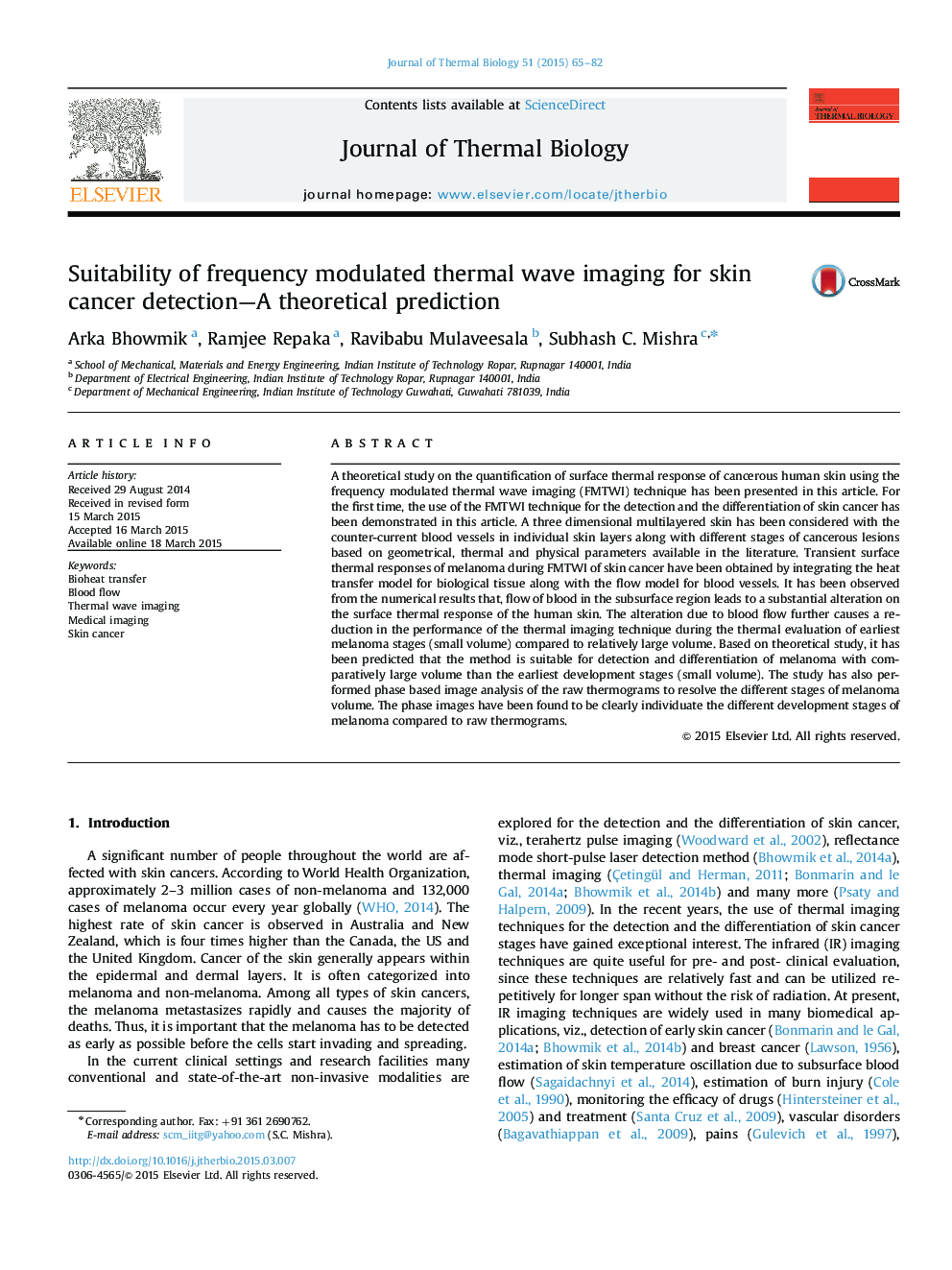| Article ID | Journal | Published Year | Pages | File Type |
|---|---|---|---|---|
| 2842805 | Journal of Thermal Biology | 2015 | 18 Pages |
•Non-stationary thermal wave imaging technique has been proposed to detect skin melanoma•Suitability of the non-stationary thermal wave imaging for early melanoma has been evaluated•Coupled bioheat and blood flow models have been employed in the numerical analysis•Performance of non-stationary thermal wave imaging reduces due to regional vessels•Phasegrams assist to resolve the early melanoma that was unwrapped in the raw thermograms
A theoretical study on the quantification of surface thermal response of cancerous human skin using the frequency modulated thermal wave imaging (FMTWI) technique has been presented in this article. For the first time, the use of the FMTWI technique for the detection and the differentiation of skin cancer has been demonstrated in this article. A three dimensional multilayered skin has been considered with the counter-current blood vessels in individual skin layers along with different stages of cancerous lesions based on geometrical, thermal and physical parameters available in the literature. Transient surface thermal responses of melanoma during FMTWI of skin cancer have been obtained by integrating the heat transfer model for biological tissue along with the flow model for blood vessels. It has been observed from the numerical results that, flow of blood in the subsurface region leads to a substantial alteration on the surface thermal response of the human skin. The alteration due to blood flow further causes a reduction in the performance of the thermal imaging technique during the thermal evaluation of earliest melanoma stages (small volume) compared to relatively large volume. Based on theoretical study, it has been predicted that the method is suitable for detection and differentiation of melanoma with comparatively large volume than the earliest development stages (small volume). The study has also performed phase based image analysis of the raw thermograms to resolve the different stages of melanoma volume. The phase images have been found to be clearly individuate the different development stages of melanoma compared to raw thermograms.
